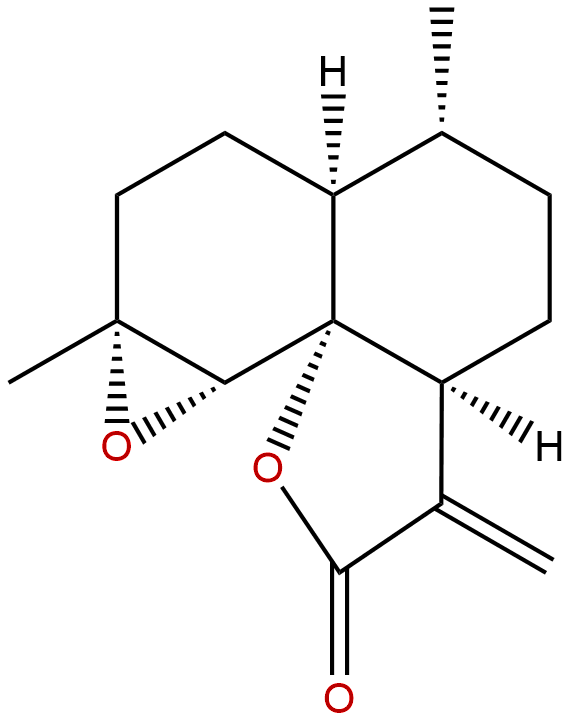
Arteannuin BCAS No.:50906-56-4
|
||||||||||
 |
|
|
||||||||

| Catalogue No.: | BP1581 |
| Formula: | C15H20O3 |
| Mol Weight: | 248.322 |
Product name: Arteannuin B
Synonym name: 107172-37-2
Catalogue No.: BP1581
Cas No.: 50906-56-4
Formula: C15H20O3
Mol Weight: 248.322
Botanical Source: Constit. of Artemisia annua
Physical Description: Powder
Type of Compound: Sesquiterpenoids
Purity: 95%~99%
Analysis Method: HPLC-DAD or/and HPLC-ELSD
Identification Method: Mass, NMR
Packing: Brown vial or HDPE plastic bottle
The product could be supplied from milligrams to grams. Inquire for bulk scale.
We provide solution to improve the water-solubility of compounds, thereby facilitating the variety of activity tests and clinic uses.
For Reference Standard and R&D, Not for Human Use Directly.
Description:
Arteannuin B and artemisinic acid are biogenetic precursors of artemisinin, an important antimalarial produced by the herb Artemisia annua, they are active against different bacteria and certain fungal species. Arteannuin B has potential antimalarialand antitumor activity.
References:
Yao Xue Xue Bao. 1992;27(4):317-20.
Derivatives of arteannuin B with antileukemia activity
METHODS AND RESULTS:
Arteannuin B (I) was converted to hydroxy lactones (VII, VIII) by a mixture of formic acid and sulfuric acid. Compound VI and Compound VII both showed activity against leukemia P 388 cell in vitro. The rate of growth inhibition were 97.5% and 11.8% for (VI) and 80% and 52.6% for (VII) at the concentration of 10 and 1 micrograms/ml respectively.
CONCLUSIONS:
It seems that the antileukemia activity of 6-membered lactone is higher than that of 5-membered and the methylene group is necessary for the antileukemia activity.
Current Science, 2000 , 78 (6) :709-713.
Antimicrobial activity of artemisinin and its precursors.
Artemisinic acid and Arteannuin B are biogenetic precursors of artemisinin, an important antimalarial produced by the herb Artemisia annua. These compounds have been screened for antimicrobial activity against a range of organisms.
CONCLUSIONS:
All the three compounds are active against different bacteria and certain fungal species.